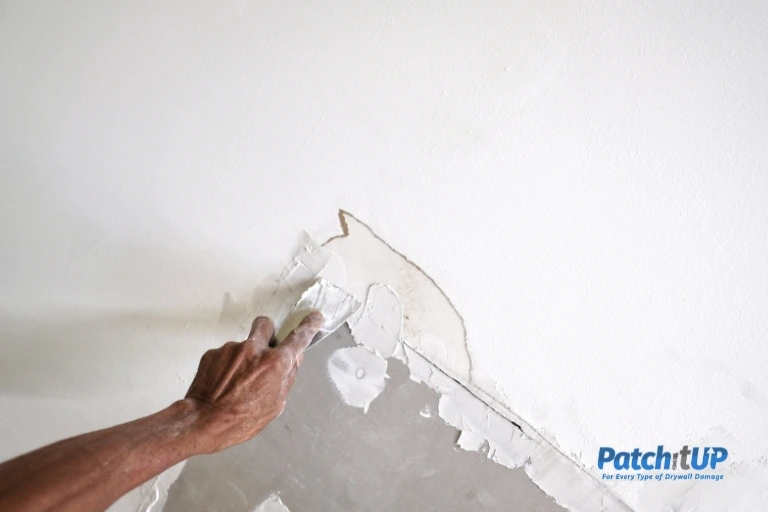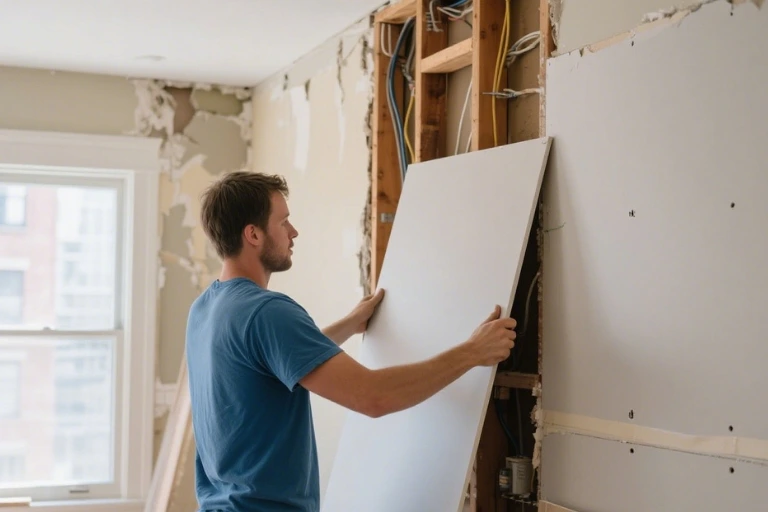Drywall is the most common material used for walls and ceilings in homes and commercial buildings. It gives a clean, finished look and serves as a solid base for paint or wallpaper. However, drywall isn’t indestructible. Over time, it can get damaged from furniture scuffs, door handles, water leaks, or even just normal wear and tear. When that happens, you’ll need to repair the damaged area—but the question is: should you do it yourself or hire a professional?
Both DIY drywall repair and professional drywall services have their own advantages and disadvantages. The best choice depends on several factors including the size of the damage, your budget, the tools you have, how much time you’re willing to spend, and how comfortable you are with home repair tasks.

What is DIY Drywall Repair?
DIY drywall repair means you handle everything yourself—from diagnosing the problem and buying the materials to patching, sanding, and painting the wall. For minor repairs, a lot of homeowners decide to take this approach.
Best for:
- Tiny holes from hanging pictures, like nail or screw holes
- Hairline cracks brought on by temperature fluctuations or settling
- Dents and dings from children’s toys or furniture
- Paint damage or surface blemishes
Pros of DIY:
- Cost-effective: You save money by not paying labor costs. A patch kit and joint compound are relatively inexpensive.
- Convenience: You can work at your own pace and schedule the work when it suits you.
- Skill-building: DIY repair is a great way to learn more about home maintenance and gain confidence with tools.
Cons of DIY:
- Takes time and patience: Even a small repair requires proper steps—cleaning, applying compound, sanding, and painting.
- Results may not look professional: If you’re inexperienced, the patch might be visible, uneven, or bumpy.
- Can be messy: Sanding drywall produces fine dust that spreads easily and is hard to clean up.
What is Professional Drywall Repair?
Hiring a skilled contractor or drywall specialist with the equipment, know-how, and experience to repair any type of drywall damage is known as professional drywall repair. For severe damage or for those who desire a perfect finish, this is frequently the better choice.
Best for:
- Large holes that require replacing drywall panels
- Cracks caused by structural movement or water damage
- Stains, mold, or bulges brought on by plumbing issues or roof leaks
- Use textured wall matching when it’s necessary to blend in with existing finishes.
- Home improvement or sale projects where aesthetics are crucial
Pros of Hiring a Professional:
- High-quality results: Professionals know how to properly measure, cut, patch, and blend drywall for a seamless finish.
- Faster turnaround: A competent worker can finish a task much more quickly than you could, saving hours or even days.
- They manage the mess, bring their own tools, and clean up after themselves, so there’s no stress or cleanup.
- Expertise: Professionals can spot hidden problems like moisture damage, structural issues, or mold that you might overlook.
Cons of Hiring a Professional:
- More expensive: You’ll pay for labor, which can increase costs, especially for smaller repairs.
- Costlier: You’ll have to pay for labor, which can raise expenses, particularly for minor fixes.
- Scheduling required: Especially during peak seasons, you might have to wait for availability.
Key Questions to Ask Yourself
To decide which option is right for you, consider the following:
- What is the size and type of damage?
- Small cracks and holes are manageable with DIY.
- Larger or deeper damage usually requires professional work.
- Do you have the tools and materials?
- DIY requires things like a putty knife, sandpaper, joint compound, mesh tape, and possibly a drill or saw.
- Do you have enough time and patience?
- A perfect-looking repair may take several hours over a couple of days, including drying time between coats.
- How important is the appearance?
- If the wall is in a visible area like a living room or hallway, a professional finish may be worth the extra cost.
- What’s your budget?
- DIY is less expensive, but if done incorrectly, it might need to be redone. Although a professional job may cost more up front, it will save time and effort later.

Final Thoughts:
Choosing between DIY and professional drywall repair comes down to the scope of the project and your comfort level with home repairs. DIY drywall repair can be rewarding and cost-effective for minor damage, but it requires time, tools, and patience. On the other hand, hiring a professional ensures that the job is done quickly and with high-quality results—especially for complex or larger repairs.
If you’re dealing with simple surface damage and feel confident with tools, DIY might be the right choice. But if you want a smooth, long-lasting finish or are repairing serious damage, calling in a Pro might be a better investment. In any case, correctly repairing drywall raises your home’s value, safety, and appearance.
FAQ For DIY vs. Professional Drywall Repair
Q1: Can you DIY drywall repair?
A. Yes, you can use simple tools and patch kits to do your own drywall repair for minor cracks, holes, or dents.
Q2: What does drywall repair include?
A. Drywall repair usually involves cleaning the damage, applying joint compound or patch, sanding, and repainting the area.
Q3: Is it better to repair or replace drywall?
A. Repair is better for small damage, but replacement is needed if the drywall is badly damaged, moldy, or water-soaked.
Q4: Is it better to DIY or professional repair drywall?
A. DIY works for minor damage if you’re handy; hire a pro for large, deep, or visible damage for a smooth, lasting finish.
Related Post:
- Plaster vs. Drywall: Which is Better for Your Walls?
- What Is a Popcorn Ceiling? Pros, Cons, and Modern Alternatives!
- Why Paint Matching is Essential After Wall Repairs!

Leave a Reply